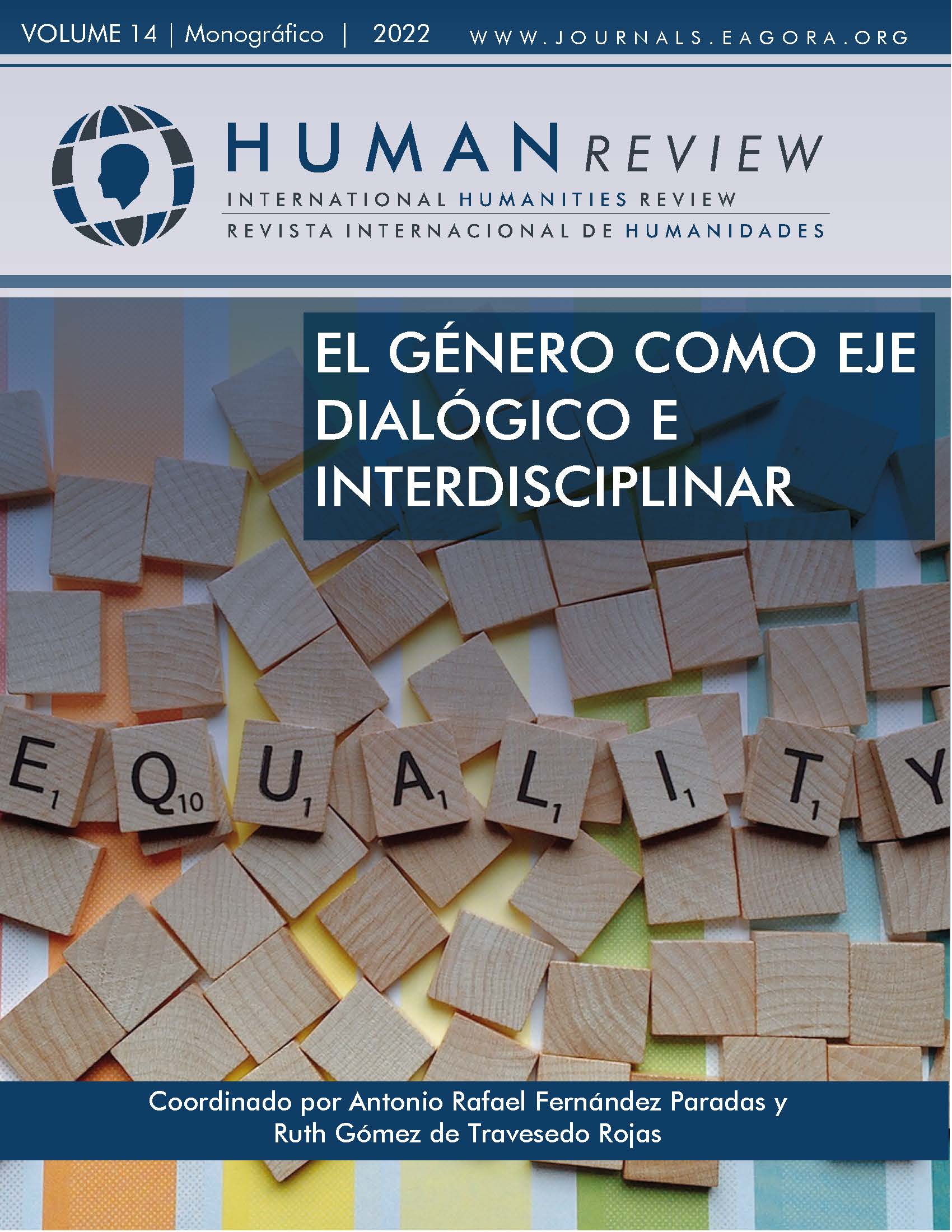Madame de Staël and the women alchemists of happiness
DOI:
https://doi.org/10.37467/revhuman.v11.4127Keywords:
Happiness, History of 19th century thought, Passions, WomenAbstract
This paper analyses Madame de Staël’s reflections on happiness, why she believes that we start from an erroneous conception, why passions are a decisive factor and what resources we have at our disposal to be happy. With regard to the latter, this paper analyses why the protagonists of her two great novels, Delphine and Corinne, fail, what the position of the male characters is and whether the author offers women other means of pursuing happiness.
References
Chasteney, Madame de (1896). Memoires de Madame de Chasteney. 1771-1815. Tome second: L’ancien régime. La révolution. Librairie Plon. https://gallica.bnf.fr/ark:/12148/bpt6k695749.image
Constant, B. (2021). Adolphe. Waldtier.
De Staël, G. (1995). Delphine. Northen Illinois University Press.
Ghersi, L. (2016): Introduzione a Madame de Staël. Lettere sugli scritti e il carattere di Jean-Jacques Rousseau. Riflessioni sul suicide. Bibliosofica Editrice.
Goldberger, A. H. (1995). Introduction. Germaine de Staël, Delphine. Northern Illinois University Press.
Isbell, J. C. (1994). The birth of European Romanticism. Cambridge University Press. DOI: https://doi.org/10.1017/CBO9780511553943
Isbell, J. C. (1998). Introduction. Madame de Staël, Corinne, or Italy (pp. vi-xx). Oxford University Press.
Lotterie, F. (2008). Introduction. Madame de Staël, OEuvres complètes, tome I (pp. 115-157). Honoré Champion.
Marín Hernández, D. (2007). Introducción. Madame de Staël, De la influencia de las pasiones. Reflexiones sobre el suicidio (pp. 9-29). Berenice. DOI: https://doi.org/10.2307/j.ctv25tnwg2.7
Montaigne, M. (2003). Ensayos completos. Cátedra.
Moscovici, C. (2010). Romanticism and Postromanticism. Lexington Books.
Neppi, E. (2019). “Corinne ou l’Italie” de Mme de Staël: i vicoli ciechi dell’incontro culturale e amoroso fra le ’nazioni’ nell’Europa di primo Ottocento. Italica belgradensia, 1, 135-156. DOI: https://doi.org/10.18485/italbg.2019.1.8
Picazo, M. D. (2020). “Mme de Staël, un primer hito europeísta en la historia moderna del diálogo intercultural”. En H. C. Hagedorn, S. Molina Plaza y M., Rigal Aragón (Coords.). Literatura, crítica, libertad. Estudios en homenaje a Juan Bravo Castillo (pp. 173-185). Ediciones de la Universidad de Castilla-La Mancha. DOI: https://doi.org/10.18239/homenajes_2020.13.11
Schoene, A. (2019). Staël’s Cosmopolitan Enthusiasm. Lumen 38, 89-104. DOI: https://doi.org/10.7202/1059274ar
Seth, C. (2017). Chronologie. En Madame de Staël. OEuvres (pp. XLI- LIV). Éditions Gallimard.
Staël, Madame de (1816). Sulla maniera e l’utilità delle traduzioni. Biblioteca italiana 1, 9-18.
Staël, Madame de (1993). Sobre las circunstancias actuales que pueden poner término a la Revolución y sobre los principios que han de servir de base a la República de Francia. Centro de Estudios Constitucionales.
Staël, Madame de (1998). Corinne, or Italy. Oxford University Press.
Staël, Madame de (2004). Saggio sulle finzioni. Liguori editore.
Staël, Madame de (2007). De la influencia de las pasiones en la felicidad de los individuos y de las naciones. Berenice.
Staël, Madame de (2008a). Lettres sur les écrits et le caractère de J.-J.Rousseau. Honoré Champion Éditeur.
Staël, Madame de (2008b). De l’influence des passions sur le bonheur. Honoré Champion Éditeur.
Staël, Madame de (2010). Corinne o Italia. Funambulista.
Staël, Madame de (2015). La literatura y su relación con la sociedad. Berenice.
Staël, Madame de (2016). Lettere sugli scritti e il carattere di Jean-Jacques Rousseau. Bibliosofica Editrice.
Staël, Madame de (2017). Consideraciones sobre la Revolución francesa. Arpa.
Starobinski, J. (2016). La tinta de la melancolía. Fondo de cultura económica.
Downloads
Published
How to Cite
Issue
Section
License
Those authors who publish in this journal accept the following terms:
- Authors will keep the moral right of the work and they will transfer the commercial rights.
- After 1 year from publication, the work shall thereafter be open access online on our website, but will retain copyright.
- In the event that the authors wish to assign an Creative Commons (CC) license, they may request it by writing to publishing@eagora.org









